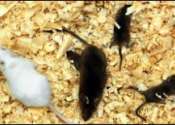How circadian rhythms underlie energy production in the 'good form of fat'
Circadian rhythms orchestrate a vast number of life's processes through the activity of a 24-hour internal clock: hormone flow, blood pressure, sleep and wake cycles, and even the timing of hibernation among marmots and bears, ...








